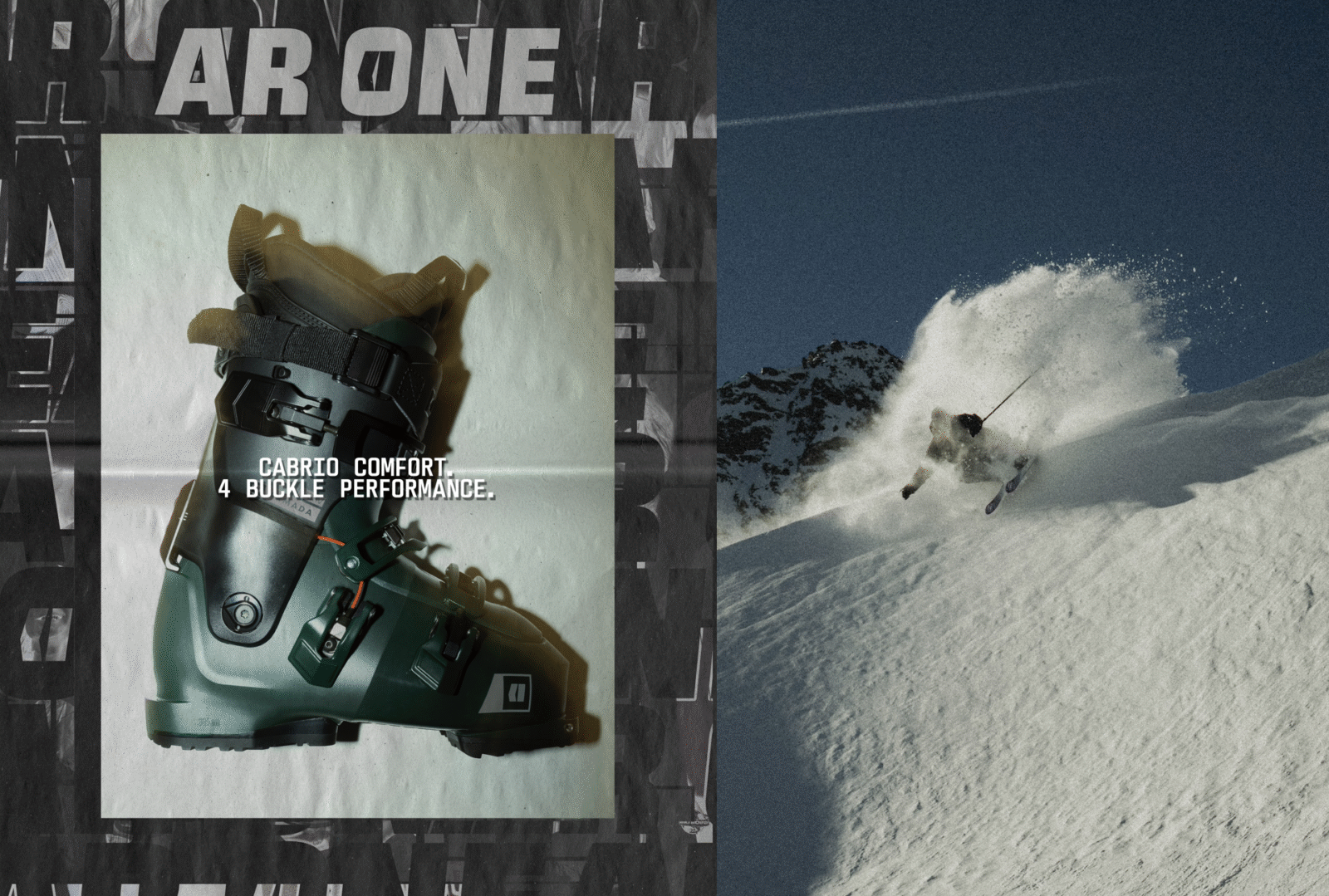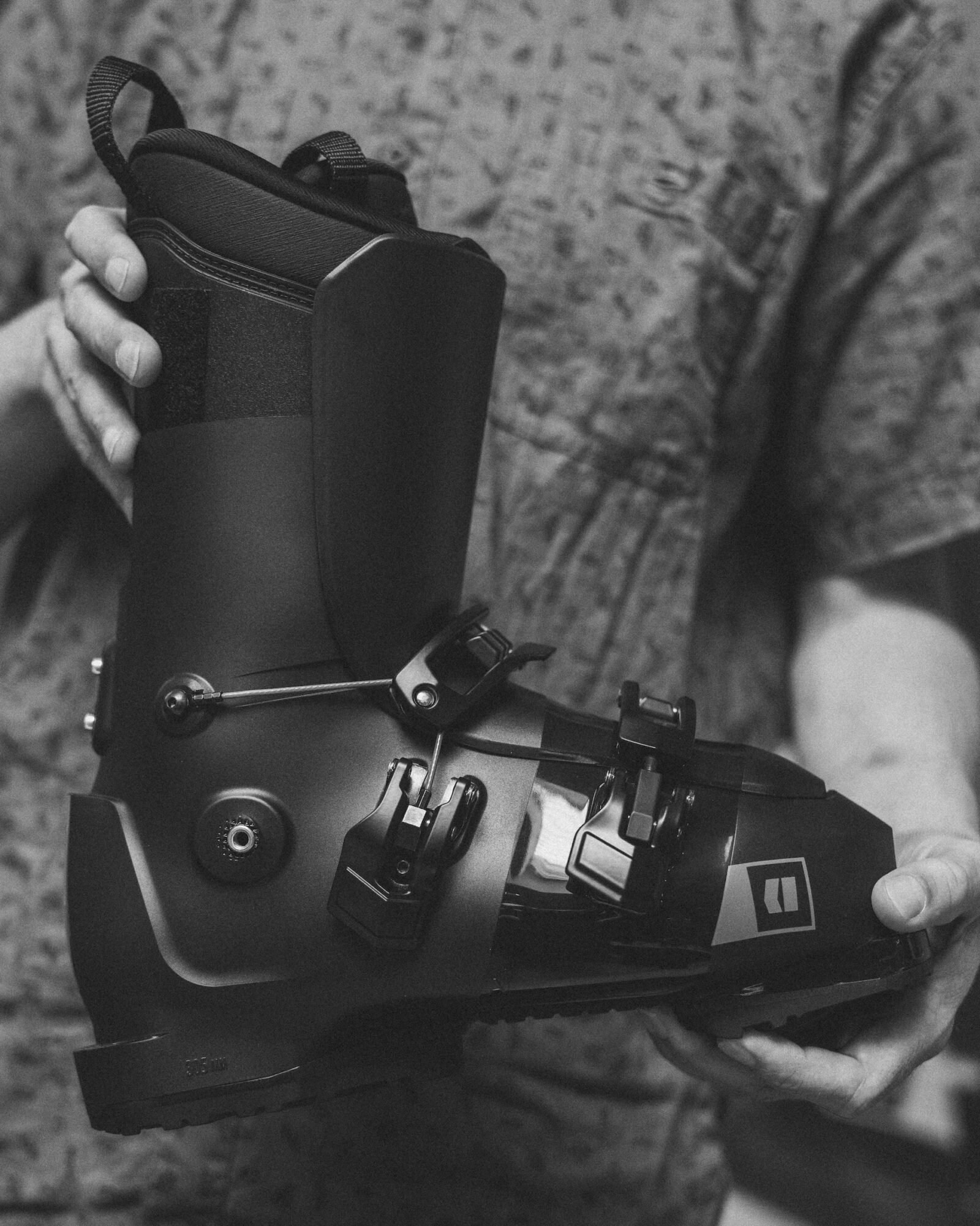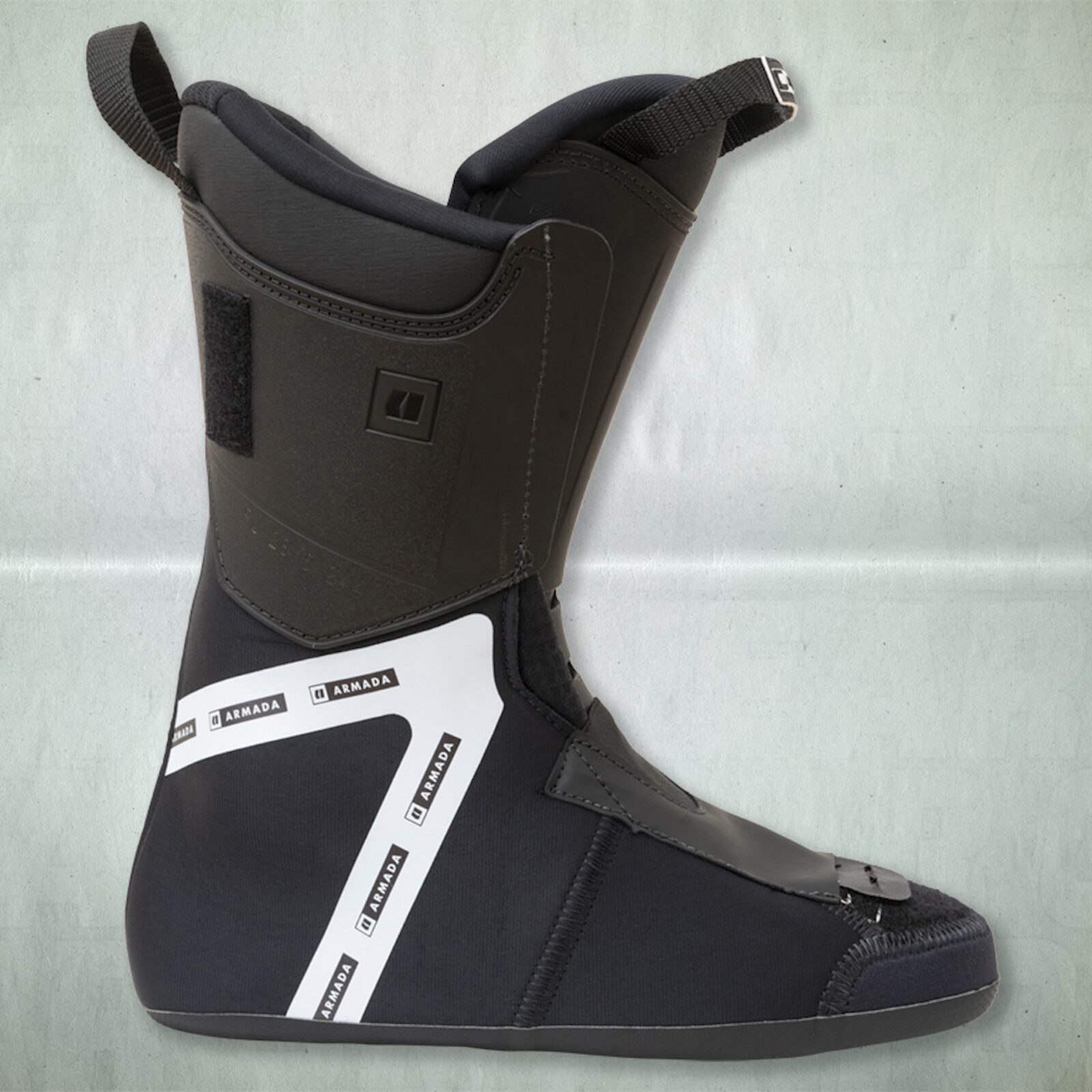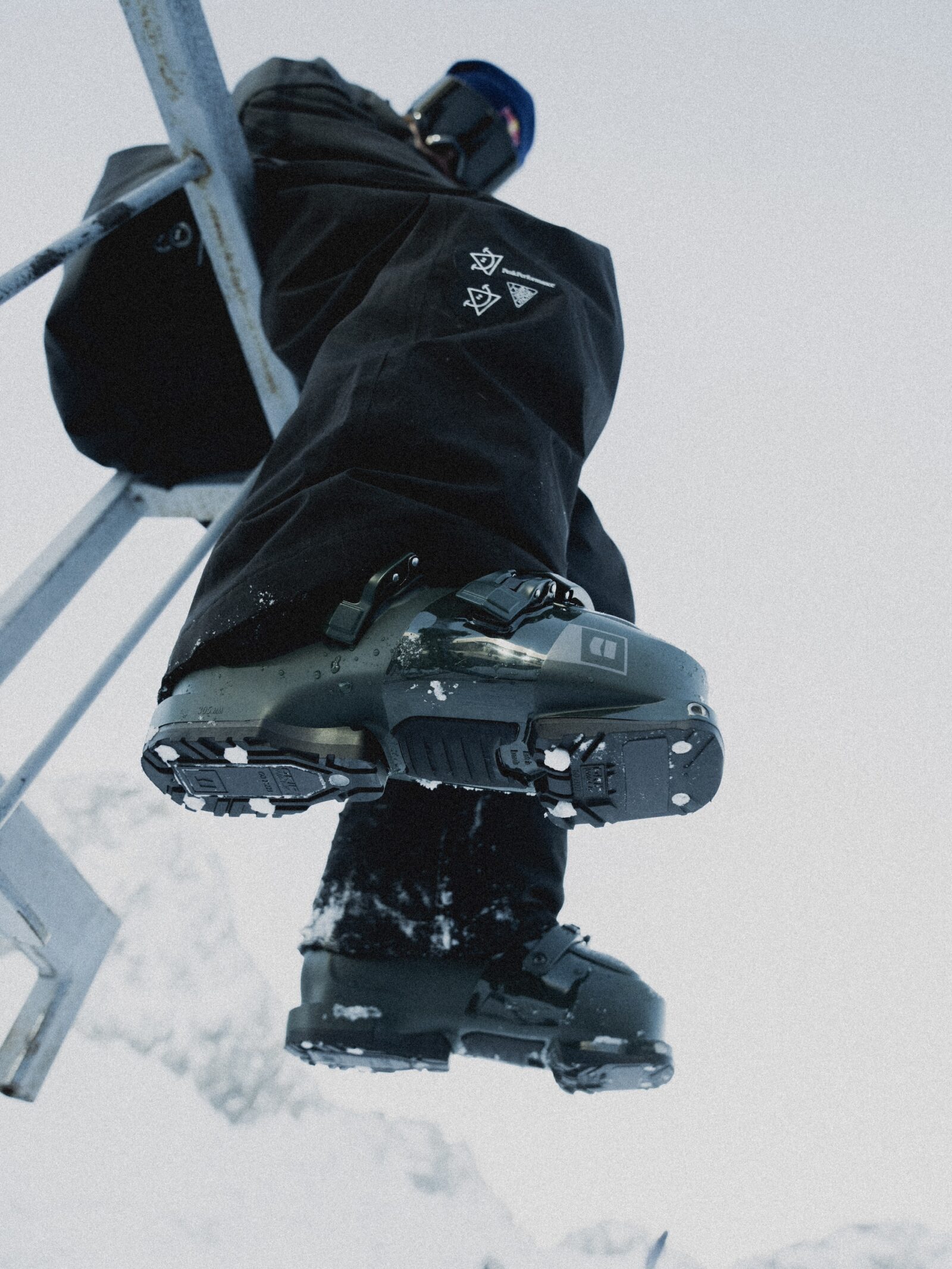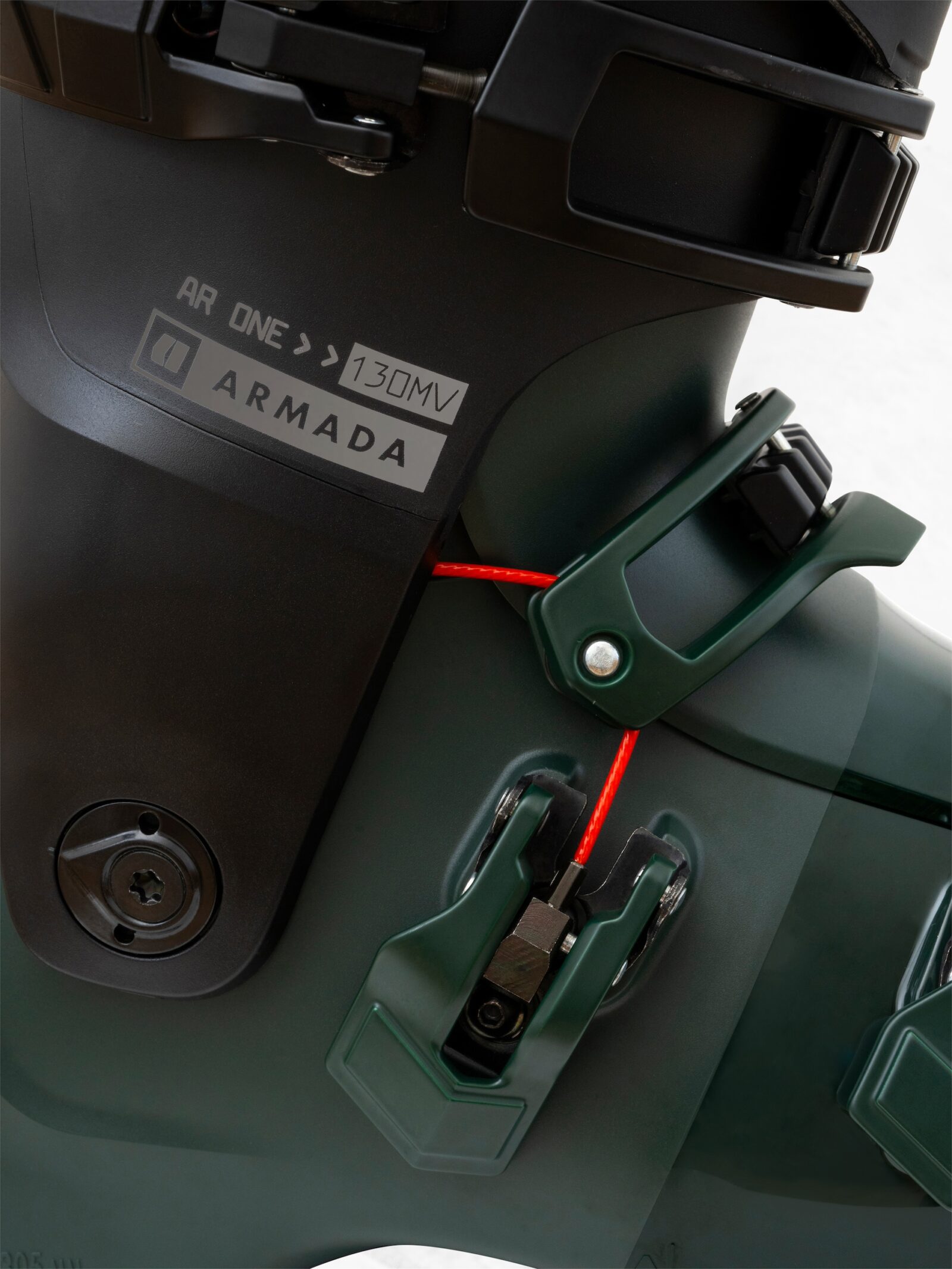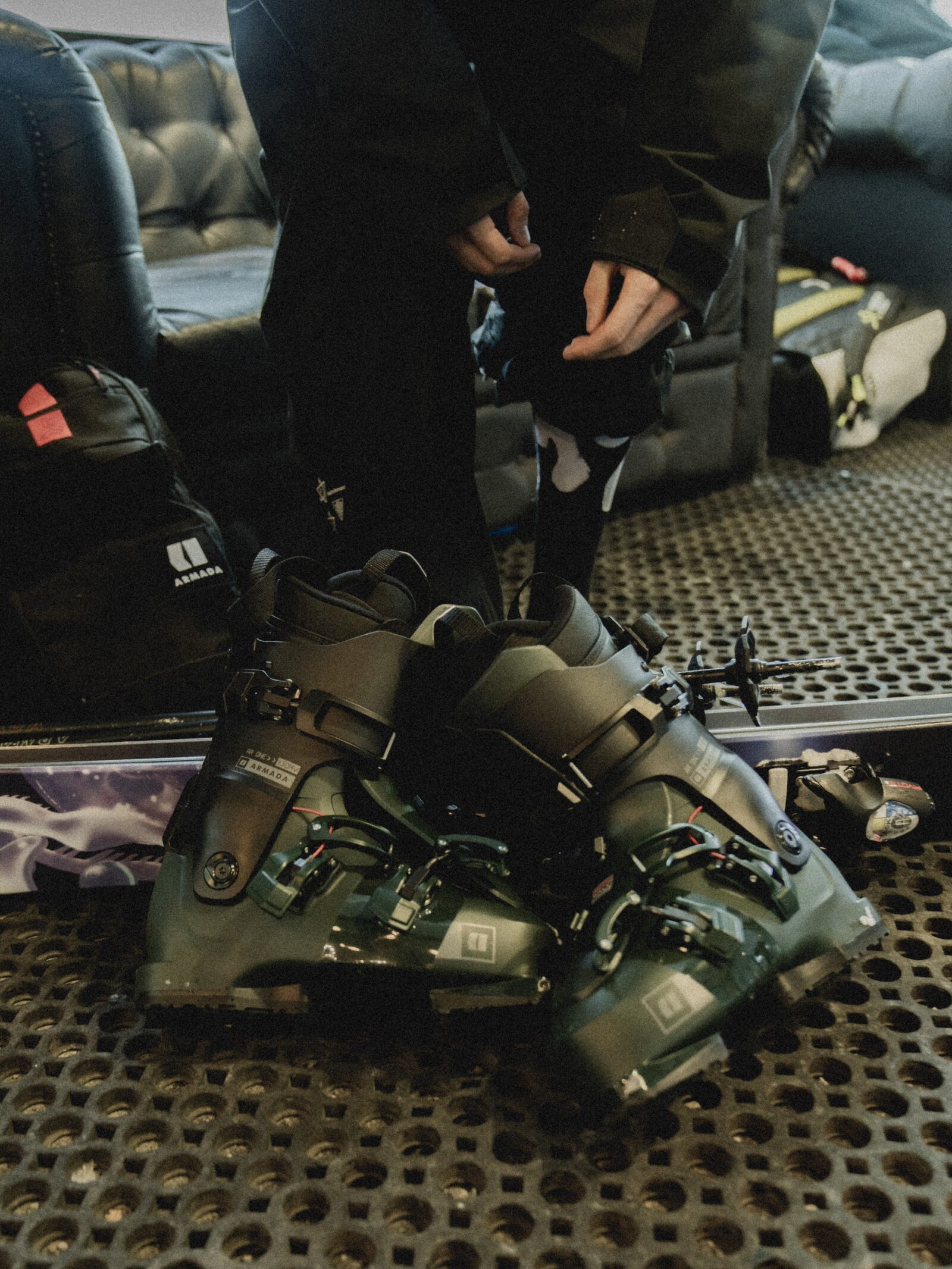With over 20 years of ski manufacturing under their belt, Armada stepped into new territory last year with the launch of their first-ever ski boot: the AR ONE. Designed in collaboration with team riders, the AR ONE introduces a unique “Hybrid Cabrio” construction that blends elements of both traditional two-piece overlap and cabrio boot designs.
Armada set out to deliver a boot that prioritizes comfort without sacrificing performance, so skiers can focus on riding, not their feet. Innovation in ski boot tech tends to move at a glacial pace, so when something genuinely new hits the scene, it’s worth paying attention. Last season, we got our hands on the AR ONE 130 MV for an inside look at what Armada’s been cooking up.
